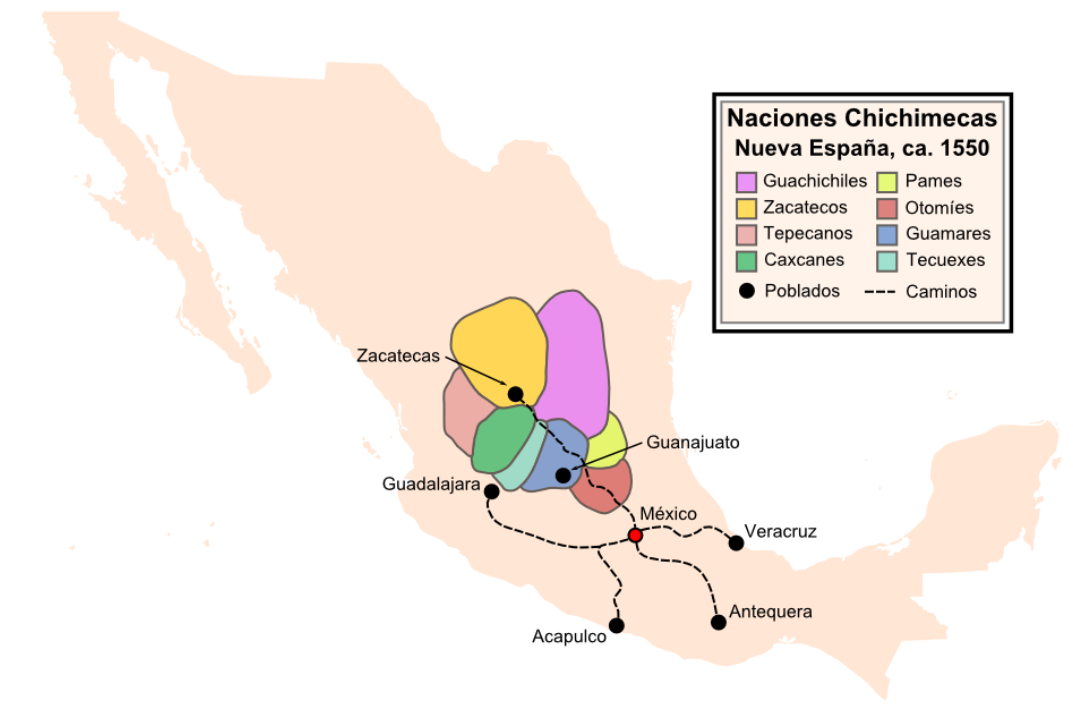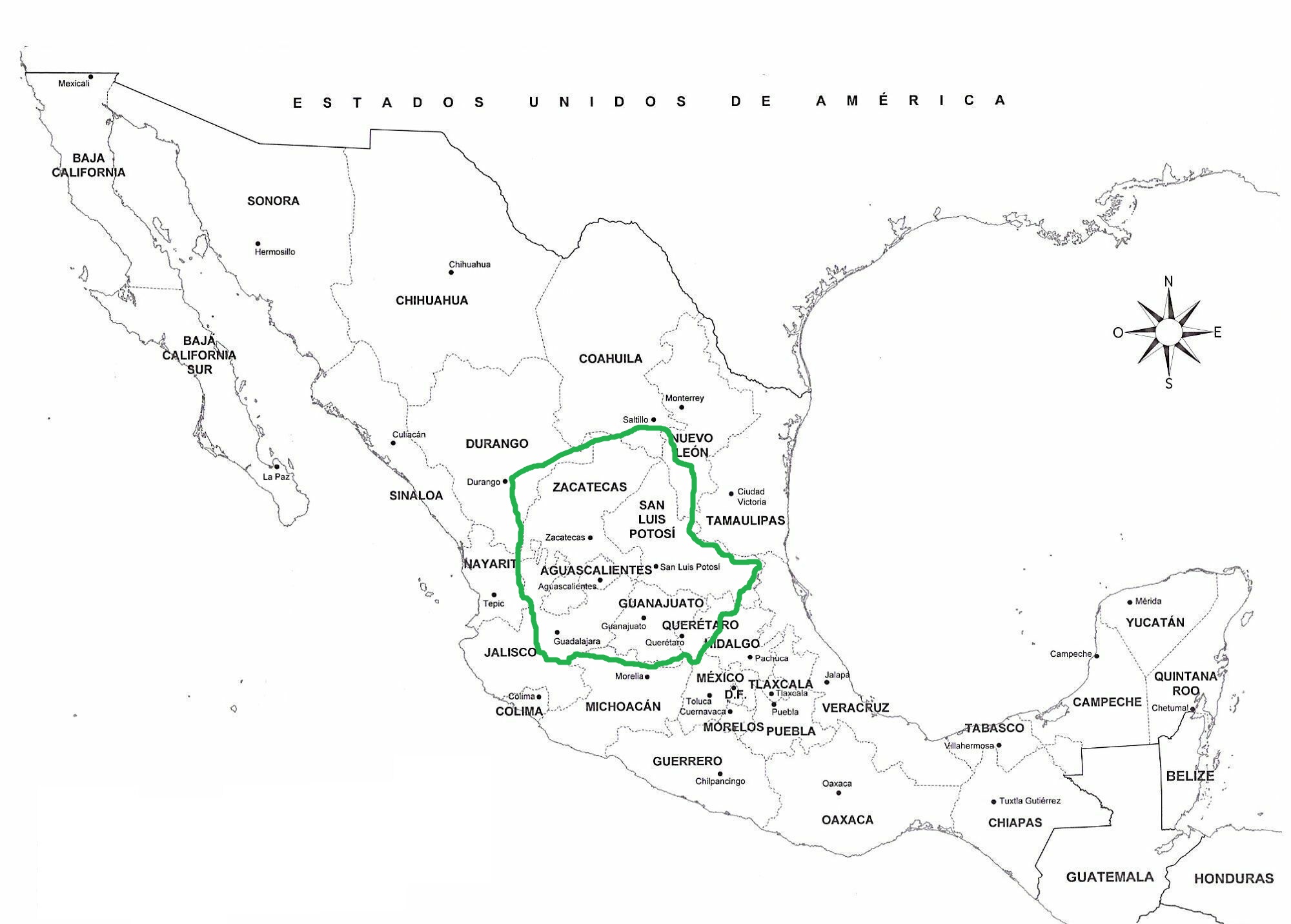|
Pame People
The north Pame, or Xi'iuy (alternate spelling: Xi'úi, Xi'ui, Xi'oi, or Xiyui), as they refer to themselves, the south Pame, or Ñáhu, Nyaxu (in Hidalgo (state), Hidalgo), and the Pame in Querétaro or Re Nuye Eyyä, are an Indigenous people of central Mexico primarily living in the state of San Luis Potosí. When Spanish colonization of the Americas, Spanish colonists arrived and conquered their traditional territory in the sixteenth century, which "extended from the modern state of Tamaulipas in the north to Hidalgo and the area around Mexico City in the south along the Sierra Madre Occidental, Sierra Madre," they renamed "the area ''Pamería'', and applied the name Pame to all of the peoples there." Estimates for population of the Pames at the time of contact with Spanish colonists in 1519 range between 40,000 and 70,000. In 1794, the population was estimated at 25,000. Recent figures for the Pame have estimated the population to be approximately 10,000 people. The Pames, along w ... [...More Info...] [...Related Items...] OR: [Wikipedia] [Google] [Baidu] |
San Luis Potosí
San Luis Potosí, officially the Free and Sovereign State of San Luis Potosí, is one of the 32 states which compose the Federal Entities of Mexico. It is divided in 59 municipalities and is named after its capital city, San Luis Potosí. It is located in eastern and central Mexico and is bordered by seven other Mexican states: Nuevo León to the north; Tamaulipas to the north-east; Veracruz to the east; Hidalgo, Querétaro and Guanajuato to the south; and Zacatecas to the north-west. In addition to the capital city, other major cities in the state include Ciudad Valles, Matehuala, Rioverde, and Tamazunchale. History In pre-Columbian times, the territory now occupied by the state of San Luis Potosí contained parts of the cultural areas of Mesoamerica and Aridoamerica. Its northern and western-central areas were inhabited by the Otomi and Chichimeca tribes. These indigenous groups were nomadic hunter-gatherers. Although many indigenous people died during Spanish colon ... [...More Info...] [...Related Items...] OR: [Wikipedia] [Google] [Baidu] |
Rioverde, San Luis Potosí
Rioverde is a city and its surrounding municipality located in the south-central part of the state of San Luis Potosí, Mexico. It is the fifth-most populated city in the state, behind San Luis Potosí, Soledad de Graciano Sánchez, Ciudad Valles, and Matehuala. The city had a 2005 census population of 49,183, while the municipality, of which it serves as municipal seat, had a population of 85,945 and an area extent of 3,064 km2 (1,183 sq mi). The population of its metropolitan area, which includes the largest municipality of Ciudad Fernández, was 126,997. The city is well known for its spring, called Media Luna. The city has been growing faster in the last four years. Rioverde lives up to its name in its rich surroundings and round the year pleasant weather. It is the birthplace of singer Ana Bárbara and composer Amador Ramos. The town has an Institute of Higher Education, the Technical Institute of Rioverde. It is one of the higher education federal institutes. Touris ... [...More Info...] [...Related Items...] OR: [Wikipedia] [Google] [Baidu] |
Chichimeca War
The Chichimeca War (1550–1600) was a military conflict between the Spanish Empire and the Chichimeca Confederation established in the territories today known as the Central Mexican Plateau, called by the Conquistadores La Gran Chichimeca. The epicenter of the hostilities was the region now called the Bajío. The Chichimeca War is recorded as the longest and most expensive military campaign confronting the Spanish Empire and indigenous people in Aridoamerica. The forty-year conflict was settled through several peace treaties driven by the Spaniards which led to the pacification and, ultimately, the streamlined integration of the native populations into the New Spain society. The Chichimeca War (1550–1600) began eight years after the two-year Mixtón War. It can be considered a continuation of the rebellion as the fighting did not come to a halt in the intervening years. The war was fought in what are the present-day Mexican states of Zacatecas, Guanajuato, Aguascaliente ... [...More Info...] [...Related Items...] OR: [Wikipedia] [Google] [Baidu] |
Bajío
The Bajío (the ''lowland'') is a cultural and geographical region within the Mexican Plateau, central Mexican plateau which roughly spans from northwest of Greater Mexico City, Mexico City to the main silver mines in the northern-central part of the country. This includes (from south to north) the states of Querétaro, Guanajuato, parts of Jalisco (Centro, Los Altos de Jalisco), Aguascalientes and parts of Zacatecas, San Luis Potosí and Michoacán. Located at the border between Mesoamerica and Aridoamerica, El Bajío saw relatively few permanent settlements and big civilizations during Pre-Columbian era, Pre-Columbian history, being mostly inhabited by the Otomi and semi-nomadic tribes known to the Aztecs as the "Chichimeca" peoples (poorly attested conglomerate of Uto-Aztecan languages, Uto-Nahua groups, from whom the Toltec and the Aztecs were probably descended). The tribes that inhabited the Bajío proved to be some of the hardest to conquer for the Spanish—peace was ul ... [...More Info...] [...Related Items...] OR: [Wikipedia] [Google] [Baidu] |
Christianization
Christianization (or Christianisation) is a term for the specific type of change that occurs when someone or something has been or is being converted to Christianity. Christianization has, for the most part, spread through missions by individual conversions, but has also, in some instances, been the result of violence by individuals and groups such as governments and militaries. Christianization is also the term used to designate the conversion of previously non-Christian practices, spaces and places to Christian uses and names. In a third manner, the term has been used to describe the changes that naturally emerge in a nation when sufficient numbers of individuals convert, or when secular leaders require those changes. Christianization of a nation is an ongoing process. It began in the Roman Empire when the early individual followers of Jesus became itinerant preachers in response to the command recorded in Matthew 28:19 (sometimes called the Great Commission) to go to all the ... [...More Info...] [...Related Items...] OR: [Wikipedia] [Google] [Baidu] |
Indigenous Peoples Of The Americas
In the Americas, Indigenous peoples comprise the two continents' pre-Columbian inhabitants, as well as the ethnic groups that identify with them in the 15th century, as well as the ethnic groups that identify with the pre-Columbian population of the Americas as such. These populations exhibit significant diversity; some Indigenous peoples were historically hunter-gatherers, while others practiced agriculture and aquaculture. Various Indigenous societies developed complex social structures, including pre-contact monumental architecture, organized city, cities, city-states, chiefdoms, state (polity), states, monarchy, kingdoms, republics, confederation, confederacies, and empires. These societies possessed varying levels of knowledge in fields such as Pre-Columbian engineering in the Americas, engineering, Pre-Columbian architecture, architecture, mathematics, astronomy, History of writing, writing, physics, medicine, Pre-Columbian agriculture, agriculture, irrigation, geology, minin ... [...More Info...] [...Related Items...] OR: [Wikipedia] [Google] [Baidu] |
Christian Mission
A Christian mission is an organized effort to carry on evangelism, in the name of the Christian faith. Missions involve sending individuals and groups across boundaries, most commonly geographical boundaries. Sometimes individuals are sent and are called missionary, missionaries, and historically may have been based in mission stations. When groups are sent, they are often called mission teams and they undertake mission trips. There are a few different kinds of mission trips: Short-term mission, short-term, long-term, relational and those that simply help people in need. Some people choose to dedicate their whole lives to mission. Missionaries preach the Christian faith and sometimes administer the sacraments, and provide humanitarian aid or services. Christian doctrines (such as the "Doctrine of Love" professed by many missions) permit the provision of aid without requiring religious conversion. Nonetheless, the provision of help has always been closely tied to evangelization ef ... [...More Info...] [...Related Items...] OR: [Wikipedia] [Google] [Baidu] |
Spanish Empire
The Spanish Empire, sometimes referred to as the Hispanic Monarchy (political entity), Hispanic Monarchy or the Catholic Monarchy, was a colonial empire that existed between 1492 and 1976. In conjunction with the Portuguese Empire, it ushered in the European Age of Discovery. It achieved a global scale, controlling vast portions of the Americas, Africa, various islands in Asia and Oceania, as well as territory in other parts of Europe. It was one of the most powerful empires of the early modern period, becoming known as "the empire on which the sun never sets". At its greatest extent in the late 1700s and early 1800s, the Spanish Empire covered , making it one of the List of largest empires, largest empires in history. Beginning with the 1492 arrival of Christopher Columbus and continuing for over three centuries, the Spanish Empire would expand across the Caribbean Islands, half of South America, most of Central America and much of North America. In the beginning, Portugal was ... [...More Info...] [...Related Items...] OR: [Wikipedia] [Google] [Baidu] |
Purépecha
The Purépecha ( ) are a group of Indigenous people centered in the northwestern region of Michoacán, Mexico, mainly in the area of the cities of Cherán and Pátzcuaro. They are also known by the derogatory term " Tarascan", an exonym, applied by outsiders and not one they use for themselves. The Purépecha occupied most of Michoacán but also some of the lower valleys of both Guanajuato and Jalisco. Celaya, Acambaro, Cerano, and Yurirapundaro. Now, the Purépecha live mostly in the highlands of central Michoacán, around Lakes Patzcuaro and Cuitzeo. History Prehispanic history It was one of the major empires of the Pre-Columbian era. The capital city was Tzintzuntzan. Purépecha architecture is noted for step pyramids in the shape of the letter "T". Pre-Columbian Purépecha artisans made feather mosaics that extensively used hummingbird feathers, which were highly regarded as luxury goods throughout the region. During the Pre-Colonial era, the Purépecha kingdo ... [...More Info...] [...Related Items...] OR: [Wikipedia] [Google] [Baidu] |
Otomi
The Otomi (; ) are an Indigenous people of Mexico inhabiting the central Mexican Plateau (Altiplano) region. The Otomi are an Indigenous people of the Americas who inhabit a discontinuous territory in central Mexico. They are linguistically related to the rest of the Otomanguean-speaking peoples, whose ancestors have occupied the Trans-Mexican Volcanic Belt for several thousand years. Currently, the Otomi inhabit a fragmented territory ranging from northern Guanajuato, to eastern Michoacán and southeastern Tlaxcala. However, most of them are concentrated in the states of Hidalgo, Mexico and Querétaro. According to the National Institute of Indigenous Peoples of Mexico, the Otomi ethnic group totaled 667,038 people in the Mexican Republic in 2015, making them the fifth largest Indigenous people in the country. Of these, only a little more than half spoke Otomi. In this regard, the Otomi language presents a high degree of internal diversification, so that speakers of one varie ... [...More Info...] [...Related Items...] OR: [Wikipedia] [Google] [Baidu] |





